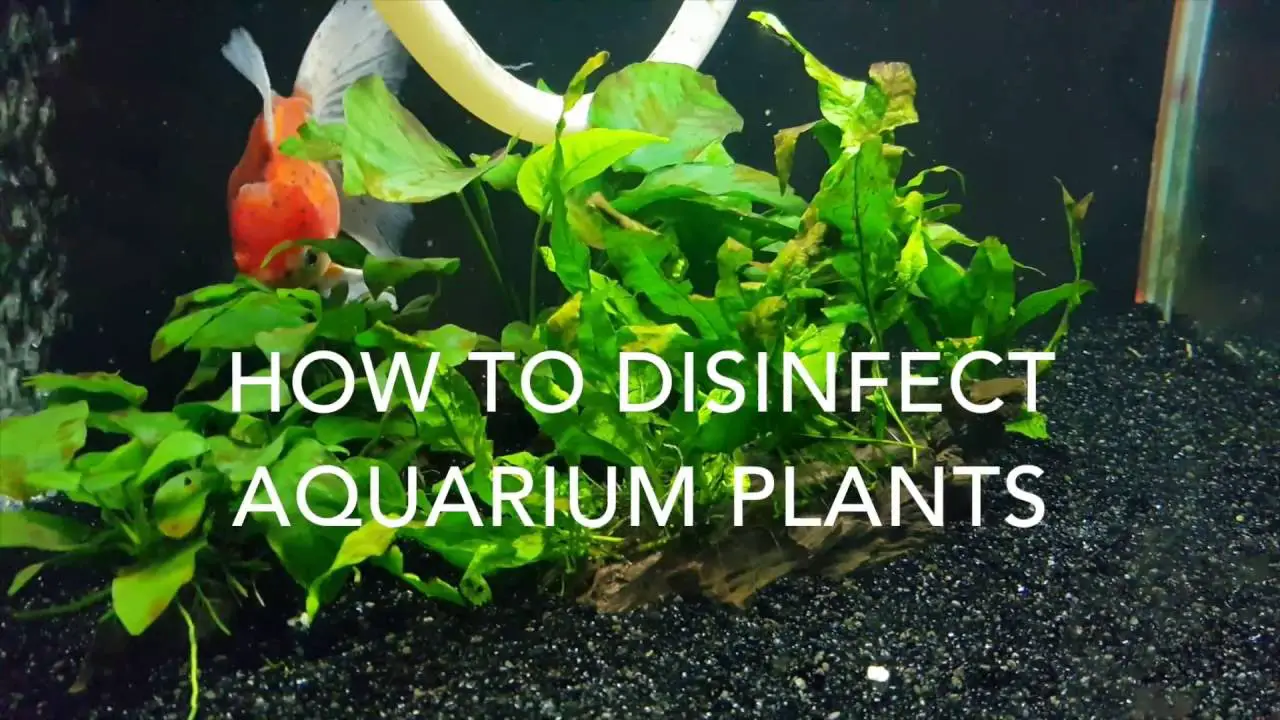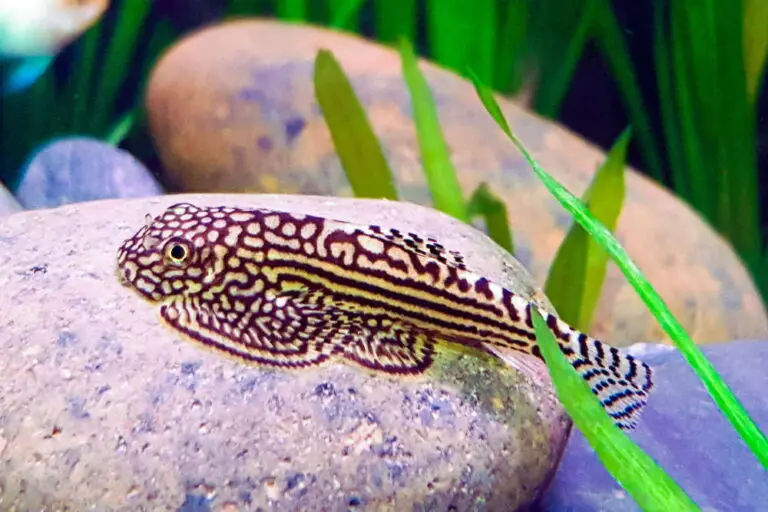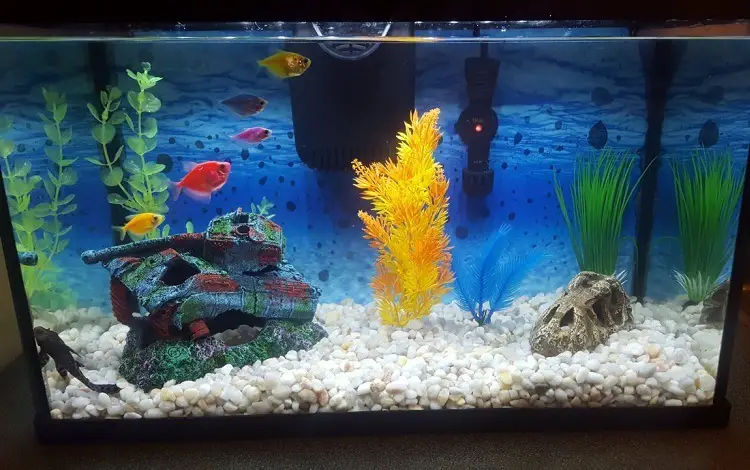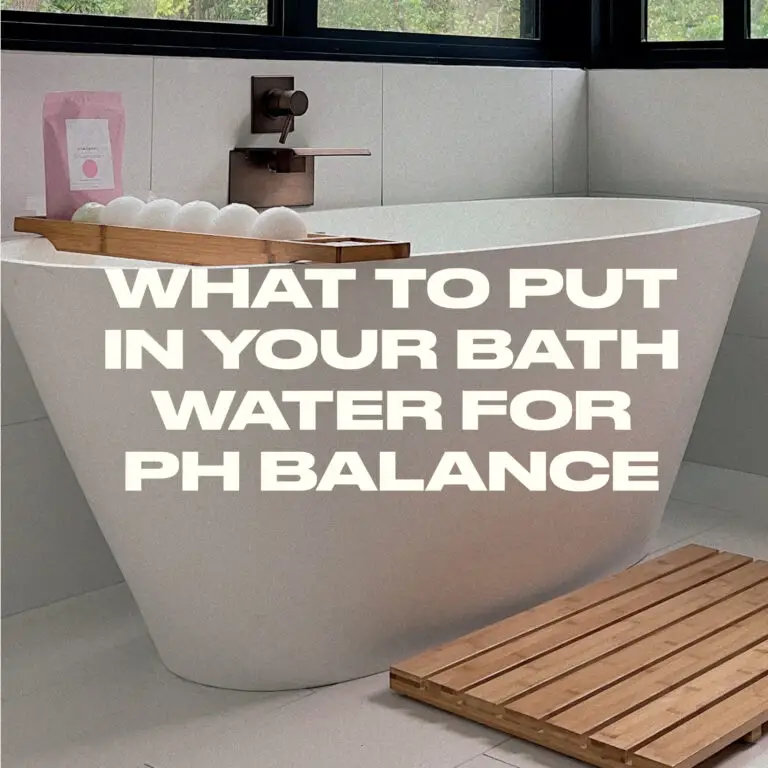How to Disinfect Aquarium Plants?
To disinfect aquarium plants, first remove them from the tank and rinse with cool tap water to remove any dirt or debris.
Soak the plants in a solution of one part bleach to 10 parts water for 15 minutes. Rinse again with warm tap water before returning to the tank.
Monitor pH levels and make sure they return to normal before adding fish back into the tank after reintroducing the plants.
You can use hydrogen peroxide instead of bleach; mix 1-2 teaspoons per gallon of aquarium water and soak for 5 minutes.
Then rinse thoroughly before returning to your tank. Make sure this is done properly.
As it will ensure there are no harmful bacteria on your plants that could be passed onto your fish!
Remove the plants from your aquarium: Before you can disinfect your aquarium plants, you must first remove them from the tank.
This will prevent any of the chemicals used to disinfect the plants from entering into your tank and harming its inhabitants.
Rinse off the dirt and debris: Use a soft cloth or sponge to rinse away any dirt, grime, or algae that may be on the surface of the plant leaves and stems.
Make sure to get rid of all visible debris before moving on to step three.
Submerge in a bleach solution: Fill a bucket with one gallon of warm water and add 1 teaspoon full of household bleach (this should have 5% chlorine).
Submerge each plant in this mixture for five minutes then move onto step four.
Immediately after removing it from the solution as prolonged exposure could damage them further if left too long in contact with bleach solution.
Rinse thoroughly with clean water: Using fresh tap water, give each plant another thorough rinsing until there is no longer any residual chlorine smell coming off them when they are wet.
This will help ensure that none of these toxic particles remain behind which could potentially harm fish once reintroduced into their home environment afterwards.
Dry completely with paper towels: Once finished rinsing off all surfaces use some paper towels to dry each piece completely before returning back into their respective tanks.
How to Clean Live Aquarium Plants With Vinegar?
Regular cleaning of your live aquarium plants is important to maintain their health and beauty.
One way to clean these plants is with vinegar, which can help remove algae from the leaves.
To do this, mix a solution of one cup white vinegar per gallon of water and let the plants soak in it for 15 minutes.
After soaking them, rinse them thoroughly with cold tap water before putting them back in your tank.
How to Clean Live Plants before Putting in Aquarium?
Live plants are a great way to add greenery and life to an aquarium, but it’s important to take the time to clean them before introducing them into your tank.
To do this, you should first rinse off any dirt from the plant with cool running water.
Next, soak the plant in a solution of dechlorinated water and aquarium safe bleach for about 10 minutes.
After that, thoroughly rinse off the bleach residue with fresh dechlorinated water and let it dry completely before placing it in your aquarium.
Taking these steps will help ensure that no harmful chemicals or bacteria enter your tank when adding live plants.
Quarantine Aquarium Plants in a Bucket
Quarantining your aquarium plants is an important step to take when introducing new plants into the tank.
To quarantine, simply fill a bucket with water from the tank and place the new plant in it for at least two weeks before adding it to the main aquarium.
During this time, keep track of any signs of disease or pests that may appear on the plant’s leaves.
So that you can address them accordingly before transferring it back into your main tank.
Disinfect Aquarium Plants Hydrogen Peroxide
When it comes to cleaning and disinfecting aquarium plants, hydrogen peroxide is a great option.
It can be used to kill bacteria, fungi, algae spores, and parasites on the surface of plants.
To use hydrogen peroxide as a disinfectant for aquarium plants, simply mix one part 3% food-grade hydrogen peroxide with five parts water in a spray bottle and apply it directly to the plant leaves.
Be sure to rinse off any excess solution before adding the plant back into your tank.
How Long Should I Quarantine New Aquarium Plants?
When introducing new aquarium plants to your tank, it is important to quarantine them for at least two weeks.
This gives the plant time to acclimate and allows you to observe any signs of disease or pests.
That might have come in on the plant before introducing it into your main tank.
Quarantining also ensures that any chemicals used in treating pests will not harm other fish or invertebrates living in your main tank.
Plant Dip for Snails
Plant dip for snails is a natural way to protect your plants from pesky pests.
This method uses plain water and salt, which are both readily available in any kitchen or garden store.
By dipping the leaves of your plants into this mixture, you can help keep them free from snails and slugs.
Plant dip for snails is an effective pest control option that requires no use of chemicals or harsh pesticides!
Do I Need to Quarantine Aquarium Plants?
Yes, it is important to quarantine aquarium plants before introducing them into your tank.
Quarantining prevents the spread of disease and pests while allowing you to acclimate the plant to your water parameters.
It also ensures that any fertilizer or other additives present on the plant are not released directly into your tank and can be safely removed beforehand.
:strip_icc()/cleaning-aquarium-plants-1381082-hero-023647932fb74728b52b036d8d3b52e5.jpg)
Credit: www.thesprucepets.com
Should I Disinfect Aquarium Plants?
When it comes to aquarium plants, there is one question that every aquarist must ask – should I disinfect them? The answer is a resounding yes!
Aquarium plants have the potential to harbor disease-causing organisms and can even introduce foreign pests into your tank.
As such, it’s essential to ensure that all new aquarium plants are properly disinfected before they’re added to your tank.
This involves removing any dirt or debris from the plant and then soaking it in a solution of water and an appropriate chemical for 10 minutes.
Once complete, rinse off the plant with clean water before introducing it into your tank.
Disinfecting aquarium plants may seem like a lot of extra work but it’s well worth doing if you want to keep your fish healthy and disease free.
How Do You Sterilize Plants?
When it comes to sterilizing plants, there are a few techniques that can be used depending on the type of plant and its current growing conditions.
One of the most common methods is to use a chemical fungicide or bactericide spray.
This should be done after removing any dead leaves and other debris from the plant’s surface, then spraying the entire plant until it is thoroughly wetted.
Another option is to dip your plants in boiling water for several minutes.
This will kill both fungi and bacteria but can damage some types of foliage so take care when doing this!
Finally, you can also try submerging your plants in hot (not boiling) water for up to an hour.
Which will also kill off any harmful microorganisms without damaging them too much.
Whichever method you choose, make sure that you follow all manufacturer instructions carefully as these chemicals can be dangerous if not handled correctly!
Can I Disinfect Aquarium Plants With Vinegar?
Yes, it is possible to disinfect aquarium plants with vinegar. Vinegar can be used as a natural alternative for cleaning and sterilizing fish tanks and other aquatic habitats.
Vinegar has been known to kill bacteria and algae that may inhabit your aquarium plants.
It is important to note, however, that vinegar should not be used directly in the fish tank water as it can harm or even kill the fish inside.
To use vinegar on your aquarium plants, simply mix equal parts of white distilled vinegar with clean water in a spray bottle.
Shake well before using and make sure you rinse off all excess solution from your plants afterwards so they don’t become too acidic.
If you are concerned about residual odors after spraying the mixture onto your plant.
Surfaces then try adding several drops of lemon juice into the mix which will help neutralize any smells associated with using this method of disinfection.
How Do You Deep Clean Aquarium Plants?
Deep cleaning aquarium plants is essential to maintain a healthy and balanced ecosystem.
To do so, start by removing the plant from the aquarium and placing it in a bucket of freshwater.
Once removed, gently scrub off any dirt or algae that has accumulated on the leaves with a soft brush.
After scrubbing, rinse under running water to remove any remaining debris.
Next, you can apply an appropriate aquatic cleaner such as sodium bicarbonate solution or diluted bleach to further remove stubborn algal growths.
Make sure not to use too much of either solution as this could cause harm to your plants’ delicate tissues.
Finally, rinse thoroughly with clean water before returning the plant back into its original environment.
By following these steps regularly, you can ensure that your plants remain free from excess dirt and pollutants for years!
Conclusion
Disinfecting aquarium plants is a necessary step in maintaining a healthy aquatic environment.
Not only will it help to keep diseases away, but it can also prevent the spread of bacteria and parasites from plant to plant.
With the proper tools and techniques, you can easily clean your aquarium plants in order to ensure that they are safe for your fish tank inhabitants.






